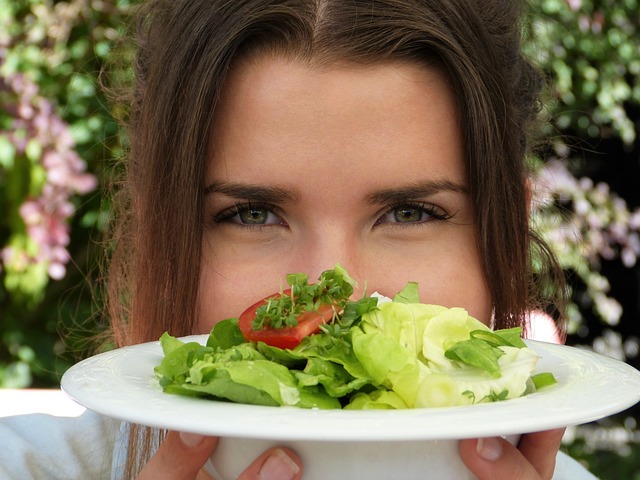Welcome to the world of smoking, where flavor and tenderness merge to create mouthwatering slow-cooked meats. In this guide, we will explore the principles of low and slow cooking, the essential techniques and tips to elevate your smoking game, and the equipment and wood types needed for the perfect smoky flavor.

Key Takeaways:
- Low and slow cooking involves the process of smoking food at a low temperature for an extended period to enhance flavor and tenderness.
- Smoking techniques such as using different wood types, controlling smoking temperature, and placing the meat in a container to hold the smoke are essential for a successful smoking experience.
- Types of smokers, including charcoal smokers, electric smokers, and gas smokers, offer different advantages and options for smoking enthusiasts.
- Choosing the right wood for smoking, such as hardwoods like hickory and oak, can influence the flavor of the smoked meats.
- Low and slow smoking techniques allow for precise control of doneness, enhanced flavor, and improved meat tenderness when done correctly.
The Difference Between a Smoker and a BBQ
When it comes to cooking mouth-watering food outdoors, there are two popular methods: smoking and grilling on a BBQ. While both techniques produce delicious results, they differ in terms of cooking style, heat, and flavor. Let’s explore the key distinctions between a smoker and a BBQ.
A smoker is designed to cook food at low and slow temperatures, typically between 200 to 220 degrees Fahrenheit. This slow cooking process allows the food to absorb delicious smoke flavors and become incredibly tender. By utilizing low heat and generating consistent smoke, smokers create a unique taste profile that can’t be replicated through other cooking methods.
On the other hand, a BBQ (barbecue) typically involves cooking food over direct heat for a shorter period. This method is perfect for quick and juicy meals like burgers, hot dogs, and steaks. While grilling offers a smoky flavor, it’s not as intense or infused into the food as it is with smoking.
So, what does this mean for your culinary adventures? If you’re looking to achieve a deep, rich smoke flavor and incredibly tender results, smoking is your best bet. This method is ideal for larger cuts of meat, such as brisket or ribs, that benefit from the slow breakdown of connective tissues to become melt-in-your-mouth delicious.
| Feature | Smoker | BBQ |
|---|---|---|
| Cooking Style | Low and slow heat | Direct heat |
| Cooking Time | Longer cooking time | Shorter cooking time |
| Flavor | Intense, rich smoke flavor | Milder smoke flavor |
Remember, whether you choose a smoker or a BBQ, both methods offer unique taste experiences. It ultimately depends on your preferences, the type of food you’re cooking, and the flavors you want to achieve. So fire up your smoker or BBQ, add your favorite ingredients, and savor the deliciousness that awaits!
Interesting Fact:
Did you know that smoking food is an ancient cooking technique that has been used for centuries to preserve food? What once served as a preservation method has evolved into a beloved cooking technique cherished for its ability to create incredibly flavorful dishes.
Types of Smokers and Equipment
When it comes to smoking food, there are several types of smokers and equipment available to choose from. Each type offers its own unique benefits and considerations.
Charcoal Smokers
Charcoal smokers are a popular choice among smoking enthusiasts. They use charcoal as the fuel source, which imparts a distinct smoky flavor to the food. However, regulating the temperature in a charcoal smoker can be more challenging compared to other types. It requires careful monitoring and adjustment to maintain the desired cooking temperature.
Electric Smokers
Electric smokers are known for their simplicity and ease of use. They feature temperature control options that allow for precise cooking temperature settings. This makes them a convenient choice for beginners or those who prefer a hassle-free smoking experience. Electric smokers are also energy-efficient and produce consistent results.
Gas Smokers
Gas smokers are another popular option for smoking food. They use propane as the fuel source, offering convenient temperature regulation and quick heat-up times. With gas smokers, you have better control over the cooking temperature, making it easier to achieve consistent results. They are a great choice for those who value convenience and efficiency.
Smoker Box
If you already own a BBQ grill, you can convert it into a smoker by using a smoker box. A smoker box is a small metal container that holds wood chips. It can be placed directly on top of the grill’s heat source, allowing the wood chips to smolder and produce smoke. This method is a cost-effective way to add smoky flavor to your food without investing in a dedicated smoker.
When choosing the right smoker and equipment, there are a few factors to consider. Space availability, preferred fuel type, the level of effort required, and budget should all be taken into account. Each type of smoker offers its own advantages, so choose the one that best suits your needs and preferences.
Now that you’re familiar with the different types of smokers and smoking equipment available, let’s explore the importance of choosing the right wood for smoking in the next section.
Choosing the Right Wood for Smoking
When it comes to achieving the perfect smoky flavor in your smoked meats, choosing the right wood is key. Hardwoods, such as hickory, oak, and apple, are highly recommended for smoking. These hardwoods impart a distinct and delicious smoky flavor that enhances the overall taste of the food.
However, it’s worth noting that there are other fuel options available for smoking, including charcoal, wood pellets, propane, and electricity. Charcoal smokers are often the most affordable choice, while electric smokers offer a more hands-free smoking experience.
The type of wood you choose for smoking will directly impact the flavor profile of your food. For example, hickory wood is known for its bold and bacon-like smoky taste, while maple wood offers a sweeter and milder flavor.
Before using wood for smoking, it’s essential to soak it in water. This prevents the wood from burning too quickly and ensures a steady release of smoke during the smoking process. If you’re using wood chips, you can soak them and place them in an aluminum foil pouch with holes to allow for several hours of smoking.
| Wood Type | Flavor Profile |
|---|---|
| Hickory | Bold and bacon-like |
| Oak | Mild and versatile |
| Apple | Slightly sweet and fruity |
Choosing the right wood and preparing it correctly are crucial steps in achieving the desired smoky taste in your smoked meats. So take your time, experiment with different wood types, and savor the flavorful results!
Benefits and Techniques of Low and Slow Smoking
The low and slow method of smoking offers several benefits for achieving perfectly cooked and tender food with enhanced flavor and a smoky essence. This technique, combined with the use of rubs and brine, and a quality food smoker, can take your smoking game to the next level.
Precise Control of Doneness
Low and slow smoking allows for precise control of doneness, ensuring that the food is perfectly cooked and tender. Unlike faster cooking methods, such as grilling, the slow cooking process in smoking breaks down the tough connective tissues in the meat, resulting in a melt-in-your-mouth texture.
Enhanced Flavor and Smoky Essence
The slow cooking process allows the fat in the meat to melt slowly and blend with the rub, enhancing the overall flavor profile. As the meat absorbs the smoky essence from the wood, it develops a rich and intense smoky flavor that is characteristic of low and slow smoking.
Retained Moisture and Tenderness
Slow cooking helps retain moisture in the meat, preserving its tenderness even after reaching the desired doneness. The low and slow method allows the meat to cook gently, allowing the natural juices to stay within the meat, resulting in succulent and flavorful smoked dishes.
Extended Shelf Life
By disrupting the protein bonds in the muscle fibers, slow cooking extends the shelf life of the smoked food by making it unfavorable for microbial growth. The controlled smoking process creates an environment that inhibits the growth of bacteria, ensuring that your smoked meats stay fresh for longer.
Smoking Techniques: Rubs and Brine
To enhance the flavor of your smoked food, consider using rubs and brine. Rubs are a combination of spices, herbs, and seasonings that are applied to the meat before smoking. They not only add flavor but also help form a crust on the exterior of the meat, enhancing its texture. Brine, on the other hand, involves soaking the meat in a solution of salt and water before smoking. This process helps to tenderize the meat and infuse it with flavor.
Quality Food Smoker: Bradley Smoker
Investing in a quality food smoker is essential for achieving consistent and delicious results. The Bradley smoker is a popular choice among smoking enthusiasts. It offers features such as temperature control and automatic wood feeding, making it easy to create the perfect smoking environment. With a Bradley smoker, you can enjoy the convenience of consistent heat and reliable smoking performance.
| Benefits of Low and Slow Smoking | Techniques |
|---|---|
| Precise control of doneness | Use of rubs |
| Enhanced flavor and smoky essence | Brining |
| Retained moisture and tenderness | |
| Extended shelf life |
Tips and Tricks for Perfect Food Smoking
To achieve perfect food smoking, it’s essential to keep in mind a few tips and tricks that can elevate your smoking game. Paying attention to important details such as temperature regulation, wood selection, and letting the meat rest can make a significant difference in the final result.
1. Use a Water Pan for Temperature Regulation
Placing a water pan inside the smoking chamber can help regulate the temperature and keep the food tender by adding much-needed moisture. The water pan creates a humid environment that helps prevent the meat from drying out during the smoking process.
2. Maintain a Low and Steady Heat
Consistently maintaining a low and steady heat throughout the entire smoking process is crucial for achieving even cooking and preventing the food from becoming too dry. A reliable smoker thermometer or temperature control system can help you monitor and adjust the heat as needed.
3. Choose the Right Wood for Enhanced Flavor
The choice of wood plays a significant role in the flavor profile of your smoked food. Different types of wood impart distinct flavors, ranging from mild to bold. Experimenting with various hardwoods such as hickory, oak, apple, or cherry can help you discover your preferred flavor combinations.
4. Let the Smoked Meat Rest
After removing the meat from the smoker, allow it to rest for a while before serving. This resting period allows the juices to redistribute within the meat, resulting in enhanced tenderness and flavor. Wrap the meat loosely in foil and let it rest for about 10 to 15 minutes to maximize juiciness.
5. Consider Using Bradley Bisquettes
For a consistent and controlled smoking experience, consider using Bradley Bisquettes. These flavored wood pucks are designed to produce pure and clean smoke, ensuring a reliable smoking outcome every time.
By following these tips and tricks, you can take your food smoking skills to the next level, creating delicious and tender smoked dishes that will impress your friends and family. Remember, perfecting the art of smoking takes practice and experimentation, so don’t be afraid to try new techniques and flavors to find your smoking style.
Pitmaster Tricks for Mastering Food Smoking
Becoming a master of food smoking requires some pitmaster tricks. These expert techniques will elevate your smoking game and help you achieve the best possible results. Here are a few tricks to up your smoking game:
1. Enhance Flavor with Brine or Rub
To take your smoked food to the next level, consider using brine or a flavorful rub. Brining your meat before smoking can enhance its moisture content and infuse it with delicious flavors. Alternatively, a well-applied rub can add depth and complexity to the taste. Experiment with different brine recipes and rub combinations to find the perfect flavor profile for your smoked dishes.
2. Choose a Quality Food Smoker
A quality food smoker can significantly impact your smoking experience. Invest in a reliable smoker, such as the Bradley smoker, that offers precise temperature control and consistent smoke production. Having a dependable and user-friendly smoker will make the smoking process easier, more enjoyable, and set you up for success in achieving perfectly smoked meats.
3. Select the Right Wood for Smoking
The choice of wood for smoking is critical for achieving the desired flavor. Different woods impart distinct flavors, ranging from mild and sweet to strong and bold. Experiment with various wood types, such as hickory, oak, apple, or mesquite, to find your favorite flavors. Remember to use the right wood for the type of meat you’re smoking to ensure a harmonious flavor combination.

4. Allow the Meat to Rest
After smoking your meat to perfection, resist the temptation to dig in immediately. Allowing the meat to rest for a few minutes before slicing and serving is crucial. During this rest period, the meat reabsorbs its juices, resulting in a more tender and flavorful end product. As a general rule, let the meat rest for about 10-20 minutes before carving to maximize its deliciousness.
By incorporating these pitmaster tricks into your smoking routine, you’ll unlock the secrets to mastering food smoking. Whether it’s using brine or rub, choosing the right wood, investing in a quality smoker, or letting the meat rest, these tricks will take your smoking skills to new heights.
The Art of Smoking: Preserving Flavor and Texture
Smoking is an art that goes beyond simply cooking food. It’s about preserving flavor and texture, creating a culinary experience that tantalizes the taste buds. By using various smoking techniques, mastering the art of low and slow cooking, selecting the right equipment and fuel, and choosing the perfect wood, you can elevate smoked meats to a whole new level.
When it comes to smoking, flavor is everything. The combination of smoke and heat transforms tough cuts of meat into tender and succulent delights. The smoky flavor that infuses the meat is a result of carefully balancing the smoking temperature, duration, and wood selection. It’s this delicate dance of flavors that makes smoking a true art.
To preserve the texture of the meat, low and slow cooking is key. This gentle cooking method allows the collagen in the meat to slowly break down, resulting in a melt-in-your-mouth texture. The long cooking times give the smoke ample time to penetrate the meat, imbuing it with that unmistakable smoky essence.
“Smoking is an art that combines science and patience to create mouthwatering flavors. By understanding the intricacies of smoking techniques and harnessing the power of smoke, you can create culinary masterpieces in your own backyard.”
The art of smoking is not limited to just meat. Cheese, fish, and even nuts can be transformed into delectable treats through the smoking process. Each ingredient has its own unique characteristics that interact beautifully with smoke, resulting in a symphony of flavors.
Mastering Smoking Techniques
To truly master the art of smoking, it’s important to explore different smoking techniques. Whether you’re using a traditional smoker, a charcoal grill, or an electric smoker, understanding the nuances of each method is crucial.
Experimenting with different fuel sources and wood types can also significantly impact the flavor profile of your smoked creations. Hardwoods like hickory, oak, and apple are popular choices that lend their unique flavors to a variety of smoked dishes.
Preserving Flavor and Texture
Preserving flavor and texture is at the heart of the smoking process. The slow cooking method ensures that the meat remains tender and juicy, while the smoke imparts a flavorful depth that is hard to replicate through other cooking methods.
Smoking is a meticulous art that demands time, patience, and attention to detail. It requires monitoring and adjusting the temperature throughout the cooking process to achieve the perfect balance of flavor and tenderness. The key is to embrace the process and savor the journey, knowing that the end result will be a masterpiece that will be remembered.
The art of smoking is not limited to professional pitmasters. With practice and a willingness to experiment, anyone can become a skilled smoker and create dishes that are bursting with flavor and texture.
Conclusion
Mastering the basics of low and slow cooking is essential for achieving the best results in smoking. Understanding the equipment, fuel, wood selection, and smoking techniques will help you create flavorful and tender smoked meats. With patience and practice, you can become a skilled pitmaster and enjoy the smoky goodness of slow-cooked meats. So, fire up the smoker, select your favorite wood, and let the low and slow cooking process work its magic.
FAQ
What is low and slow cooking?
Low and slow cooking is a method of smoking food that involves cooking it at a low temperature over an extended period. This technique allows the meat to become tender and flavorful by breaking down connective tissues.
How is smoking different from grilling?
Smoking and grilling are two different cooking methods. While grilling involves cooking food over direct heat for a short time, smoking uses low and slow heat combined with smoke and moisture to cook food, resulting in a more intense and rich flavor.
What types of smokers are available?
There are three main types of smokers: charcoal smokers, electric smokers, and gas smokers. Each has its advantages and considerations, such as ease of use, temperature control, and fuel preference.
What wood is best for smoking?
Hardwoods like hickory, oak, and apple are recommended for smoking because they impart a distinct smoky flavor to the food. The choice of wood can vary depending on personal preference and the desired flavor profile.
What are the benefits of low and slow smoking?
Low and slow smoking offers several benefits, including enhanced flavor, increased tenderness, and extended shelf life. The slow cooking process allows the meat’s fat to melt slowly, resulting in a more intense smoky essence.
What are some tips for perfect food smoking?
Some tips for perfect food smoking include using a water pan to regulate temperature and preserve tenderness, maintaining a low and steady heat, selecting the right wood for smoke flavor, and letting the smoked meat rest before serving.
What are some pitmaster tricks for mastering food smoking?
Some pitmaster tricks for mastering food smoking include using brine or rub to enhance flavor, selecting a quality food smoker like the Bradley smoker, choosing the right wood for smoking, and allowing the meat to rest after smoking.
How does smoking preserve flavor and texture?
Smoking preserves flavor and texture by slow-cooking the meat, allowing the breakdown of connective fibers and the blending of fat and rub flavors. This results in a tender and flavorful outcome.
What is the key to mastering the basics of low and slow cooking?
Mastering the basics of low and slow cooking involves understanding the equipment, fuel, wood selection, and smoking techniques. With practice and patience, you can become a skilled pitmaster and enjoy the delicious results of slow-cooked meats.
Source Links
#Smoking #Basics #Slow #Cooking




